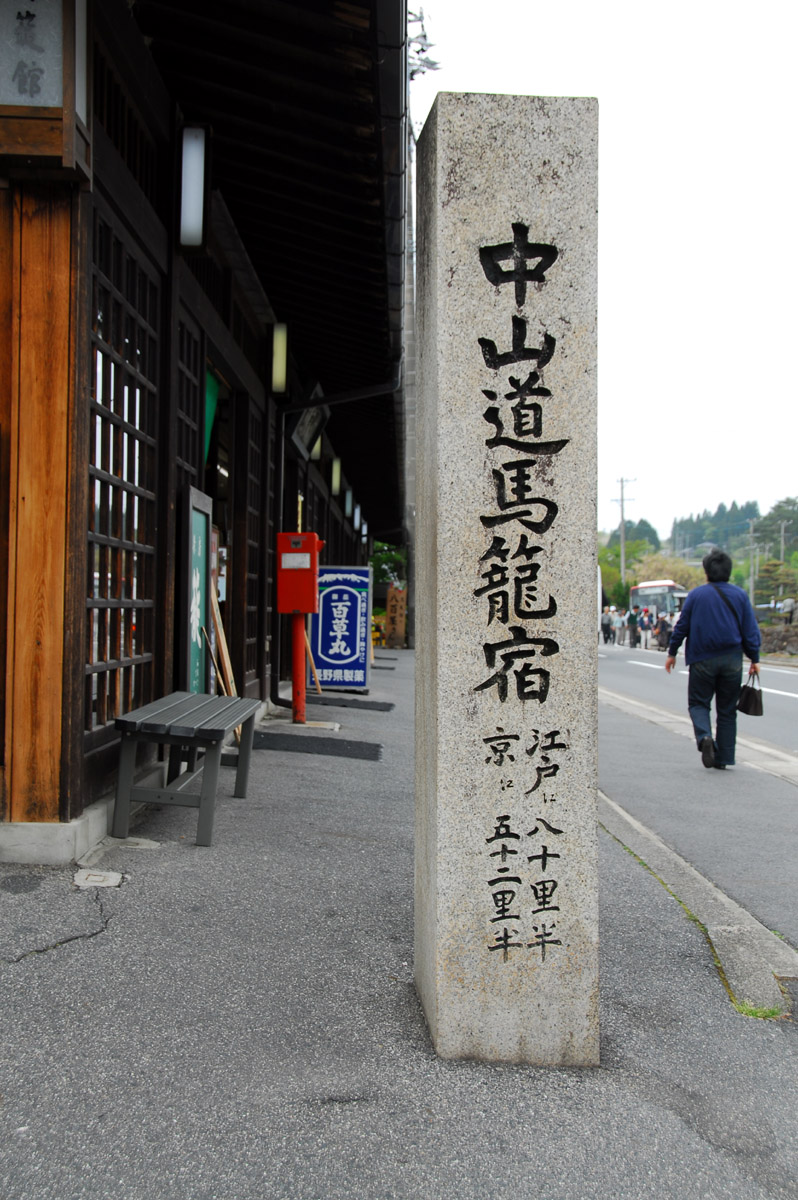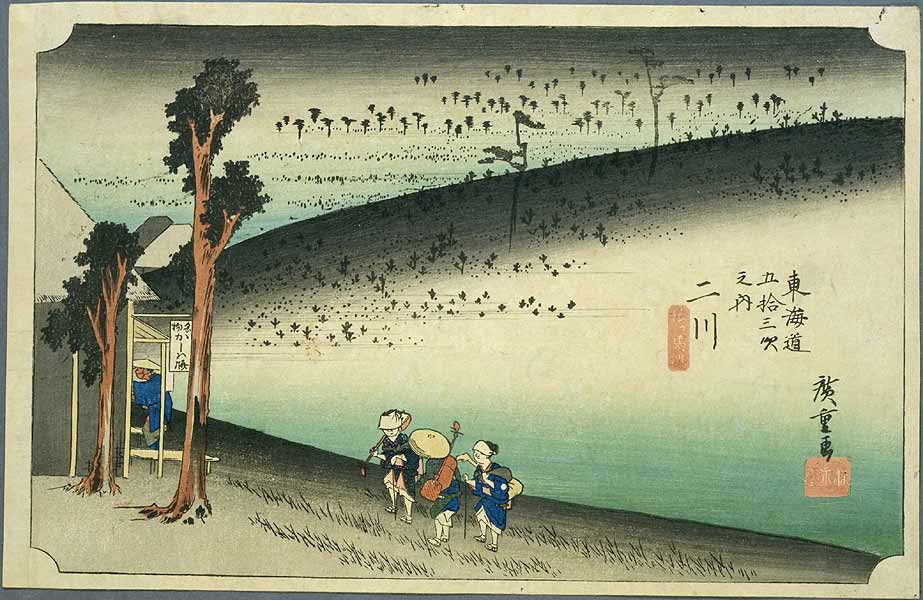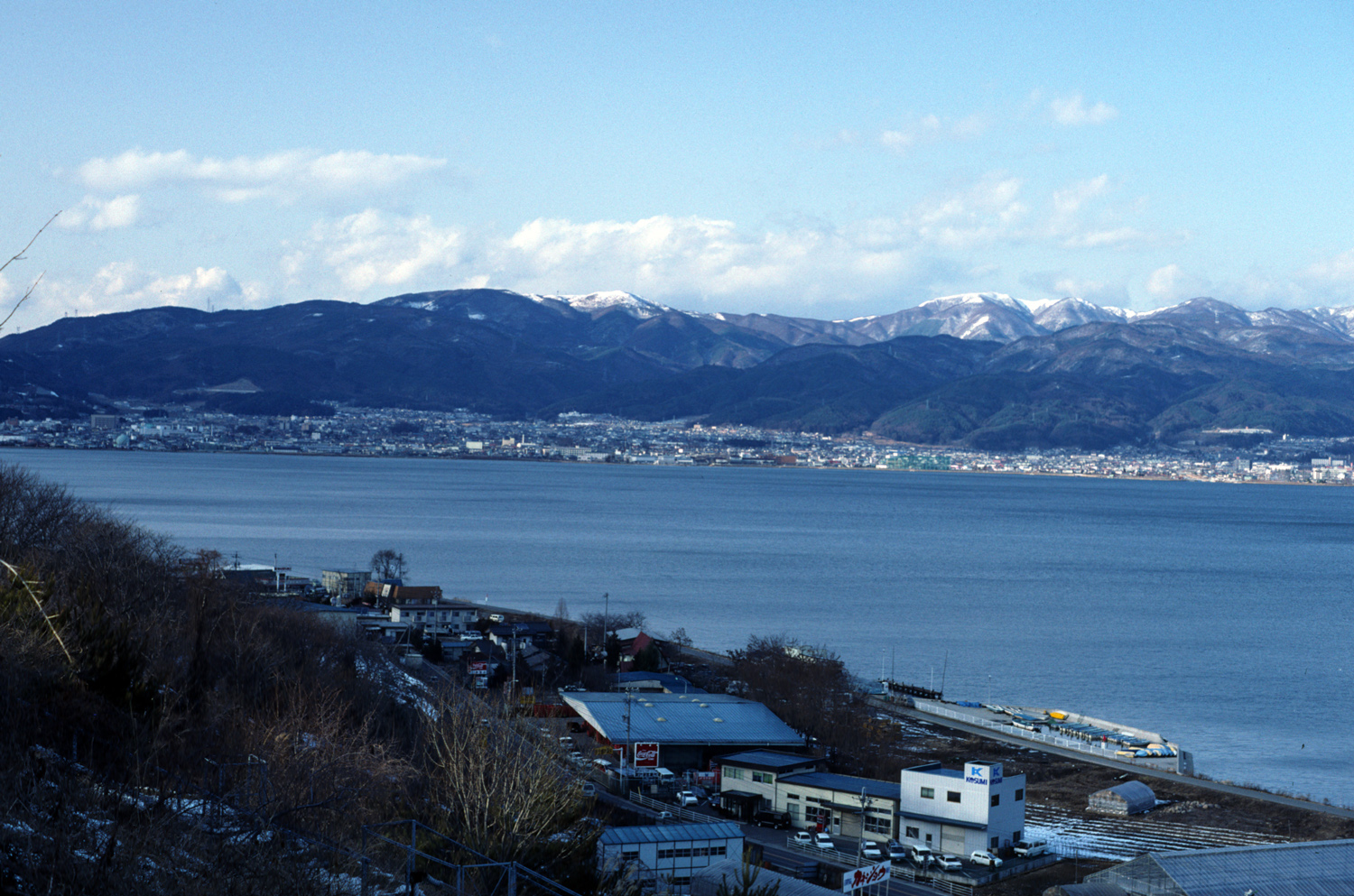|
Honjin
The ''honjin'' at Inaba Kaidō's Ōhara-shuku.">Ōhara-shuku.html" ;"title="Inaba Kaidō's Ōhara-shuku">Inaba Kaidō's Ōhara-shuku. is the Japanese word for an inn for government officials, generally located in post stations (''shukuba'') during the later part of the Edo period. Evolution of ''Honjin'' Originally, ''honjin'' were places from which generals directed battles and, therefore, were fleeting in nature. However, as commanders began to transform the ''honjin'' into temporary lodgings during battle and travel, ''honjin'' came to be places where ''daimyō'' and other representatives of the shogunate, including ''hatamoto'', ''monzeki'', etc., were allowed to stay during their travels. Many of the ''honjin'' were actually personal residences of village and town leaders. As such, they received official designations from the government and expanded their residences to include walls, gates and other features. Because of their cooperation, the owners of the ''honjin'' also ... [...More Info...] [...Related Items...] OR: [Wikipedia] [Google] [Baidu] |
Kusatsu-juku
260px, Sixty-nine Stations of the Kiso Kaidō'' series">The Sixty-nine Stations of the Kiso Kaidō">Sixty-nine Stations of the Kiso Kaidō'' series was the fifty-second of the fifty-three stations of the Tōkaidō as well as the sixty-eighth of the sixty-nine stations of the Nakasendō. It is located in the downtown area of the present-day city of Kusatsu, Shiga Prefecture, Japan. History Kusatsu has been a transportation hub for east-west travel on the ancient Tōsandō and Tōkaidō highways connecting the capital of Heian-kyō with the provinces of eastern Japan from the end of the Nara period onwards. During the Muromachi period, it developed as a relay point between Kyoto and the Ise Grand Shrines. In 1422, when Shogun Ashikaga Yoshimochi made a pilgrimage to Ise, he built a palace, the "Kusatsu Goshō" in this location. Around 1568, Oda Nobunaga forced Ashikaga Yoshiaki to cede the Kusatsu area, which he viewed as strategically critical to controlling the appro ... [...More Info...] [...Related Items...] OR: [Wikipedia] [Google] [Baidu] |
Shukuba
were post stations during the Edo period in Japan, generally located on one of the Edo Five Routes or one of its sub-routes. They were also called ''shuku-eki'' (宿駅). These post stations (or "post towns") were places where travelers could rest on their journey around the nation. They were created based on policies for the transportation of goods by horseback that were developed during the Nara and Heian periods. History These post stations were first established by Tokugawa Ieyasu shortly after the end of the Battle of Sekigahara. The first post stations were developed along the Tōkaidō (followed by stations on the Nakasendō and other routes). In 1601, the first of the Tōkaidō's fifty-three stations were developed, stretching from Shinagawa-juku in Edo to Ōtsu-juku in Ōmi Province. Not all the post stations were built at the same time, however, as the last one was built in 1624. The lodgings in the post stations were established for use by public officials and, ... [...More Info...] [...Related Items...] OR: [Wikipedia] [Google] [Baidu] |
Futagawa-juku
was the thirty-third of the fifty-three stations of the Tōkaidō. It is located in what is now the city of Toyohashi, Aichi Prefecture, Japan. It was the easternmost post station in Mikawa Province. History Futagawa-juku was established in 1601 when two villages, Futagawa (二川村 ''Futagawa-mura'') and Ōiwa (大岩村 ''Ōiwa-mura''), in Mikawa Province's Atsumi District were directed with caring for travelers. However, as the towns were rather small and were separated by 1.3 km, the original setup did not last long. In 1644, the Tokugawa shogunate moved the village of Futagawa further to the west and the village of Ōiwa further to the east, before reestablishing the post station in the Futagawa's new location. An '' ai no shuku'' was built in Ōiwa. Futagawa-juku was located approximately from Edo's Nihonbashi, the start of the Tōkaidō. Furthermore, it was from Shirasuka-juku to the east and from Yoshida-juku to the west. Futagawa-juku itself stretched for ... [...More Info...] [...Related Items...] OR: [Wikipedia] [Google] [Baidu] |
Tsumago-juku
was the forty-second of the sixty-nine post towns on the Nakasendō. It is located in Nagiso, Kiso District, Nagano Prefecture, Japan. It has been restored to its appearance as an Edo-era post town and is now a popular tourist destination. History During the Edo period, Tsumago was the forty-second of the sixty-nine post towns, which connected Edo (present-day Tokyo) with Kyoto. Prior to becoming part of the Nakasendō, it was the tenth of eleven stations along the Kisoji, a minor trade route running through the Kiso Valley. As such, it was a relatively prosperous and cosmopolitan town, with an economy based on currency. In 1968, local residents began an effort to restore historical sites and structures within the town. By 1971, some 20 houses had been restored, and a charter was agreed to the effect that no place in Tsumago should be "sold, hired out, or destroyed". In 1976, the town was designated by the Japanese government as a Nationally Designated Architectural Prese ... [...More Info...] [...Related Items...] OR: [Wikipedia] [Google] [Baidu] |
Shiga Prefecture
is a prefecture of Japan located in the Kansai region of Honshu. Shiga Prefecture has a population of 1,412,916 (1 October 2015) and has a geographic area of . Shiga Prefecture borders Fukui Prefecture to the north, Gifu Prefecture to the northeast, Mie Prefecture to the southeast, and Kyoto Prefecture to the west. Ōtsu is the capital and largest city of Shiga Prefecture, with other major cities including Kusatsu, Nagahama, and Higashiōmi. Shiga Prefecture encircles Lake Biwa, the largest freshwater lake in Japan, and 37% of the total land area is designated as Natural Parks, the highest of any prefecture. Shiga Prefecture's southern half is located adjacent to the former capital city of Kyoto and forms part of Greater Kyoto, the fourth-largest metropolitan area in Japan. Shiga Prefecture is home to Ōmi beef, the Eight Views of Ōmi, and Hikone Castle, one of four national treasure castles in Japan. History Shiga was known as Ōmi Province or Gōshū before the pref ... [...More Info...] [...Related Items...] OR: [Wikipedia] [Google] [Baidu] |
Magome-juku
was the forty-third of the sixty-nine stations of the Nakasendō connecting Edo with Kyoto in Edo period Japan. It is located in former Mino Province in what is now part of the city of Nakatsugawa, Gifu Prefecture, Japan. It was also the last of eleven stations along the Kisoji, which was the precursor to a part of the Nakasendō, running through the Kiso Valley. Gifu Sightseeing Guide: Walking Amidst History and Nature Gifu Prefecture Tourist Federation. Accessed July 10, 2007. History  Magome-juku is located in a very mountainous section of the highway betwe ...
Magome-juku is located in a very mountainous section of the highway betwe ...
[...More Info...] [...Related Items...] OR: [Wikipedia] [Google] [Baidu] |
Nagiso, Nagano
is a town located in Nagano Prefecture, Japan. , the town had an estimated population of 4,111 in 1751 households, and a population density of 19 persons per km². The total area of the town was . Nagiso is listed as one of The Most Beautiful Villages in Japan. Geography Nagiso is located in the Kiso Valley of southwestern Nagano Prefecture, bordered by Gifu Prefecture to the west. The Kiso River flows through the center of the town. Surrounding municipalities *Nagano Prefecture ** Iida ** Ōkuwa ** Achi *Gifu Prefecture ** Nakatsugawa Climate The town has a climate characterized by characterized by hot and humid summers, and cold winters (Köppen climate classification ''Cfa''). The average annual temperature in Nagiso is . The average annual rainfall is with July as the wettest month. The temperatures are highest on average in August, at around , and lowest in January, at around . History The area of present-day Nagiso was part of ancient Shinano Province. During the Edo ... [...More Info...] [...Related Items...] OR: [Wikipedia] [Google] [Baidu] |
Shimosuwa, Nagano
is a Towns of Japan, town located in Nagano Prefecture, Japan. , the town had an estimated population of 20,055 in 8864 households, and a population density of 300 persons per km². The total area of the town is . Geography Shimosuwa is located in central Nagano Prefecture, approximately 50 kilometers from the prefectural capital of Nagano city and 200 kilometers from Tokyo. The town is bordered on the south by Lake Suwa. The town has an altitude of 760 meters at the town center, and is 82% forested. Surrounding municipalities *Nagano Prefecture ** Matsumoto, Nagano, Matsumoto ** Suwa, Nagano, Suwa ** Okaya, Nagano, Okaya ** Nagawa, Nagano, Nagawa Climate The town has a humid continental climate characterized by warm and humid summers, and cold winters (Köppen climate classification ''Dfb''). The average annual temperature in Shimosuwa is 7.3 °C. The average annual rainfall is 1540 mm with September as the wettest month. The temperatures are highest on average in A ... [...More Info...] [...Related Items...] OR: [Wikipedia] [Google] [Baidu] |
Shimosuwa-juku
was the twenty-ninth of the sixty-nine stations of the Nakasendō, as well as being the ending location of the Kōshū Kaidō. It is located in the present-day town of Shimosuwa, Suwa District, Nagano Prefecture, Japan. History First built around 1601, Shimosawa-shuku flourished as a post town because it was located between two difficult mountain passes, Wada Pass and Shiojiri Pass. The town's onsens made it a heavily used rest area.Shimosuwa-shuku Aruki-net . Shimosuwa Chamber of Commerce. Accessed July 16, 2007. It also served as the entrance to the . Records show that in 1843, Shimosuwa-juku had 1,345 residents and 315 buildings. Among the building, there was one '' |
Nagano Prefecture
is a landlocked prefecture of Japan located in the Chūbu region of Honshū. Nagano Prefecture has a population of 2,052,493 () and has a geographic area of . Nagano Prefecture borders Niigata Prefecture to the north, Gunma Prefecture to the northeast, Saitama Prefecture to the east, Yamanashi Prefecture to the southeast, Shizuoka Prefecture and Aichi Prefecture to the south, and Gifu Prefecture and Toyama Prefecture to the west. Nagano is the capital and largest city of Nagano Prefecture, with other major cities including Matsumoto, Ueda, and Iida. Nagano Prefecture has impressive highland areas of the Japanese Alps, including most of the Hida Mountains, Kiso Mountains, and Akaishi Mountains which extend into the neighbouring prefectures. The abundance of mountain ranges, natural scenic beauty, and rich history has gained Nagano Prefecture international recognition as a world-class winter sports tourist destination, including hosting the 1998 Winter Olympics and a new ... [...More Info...] [...Related Items...] OR: [Wikipedia] [Google] [Baidu] |
Nagawa, Nagano
is a town located in Nagano Prefecture, Japan. , the town had an estimated population of 6,088 in 2650 households, and a population density of 32.6 persons per km². The total area of the town is . Geography Nagawa is located in the center of Nagano Prefecture. Surrounding municipalities *Nagano Prefecture ** Matsumoto ** Ueda ** Suwa ** Chino ** Shimosuwa ** Tateshina Climate The town has a climate characterized by characterized by warm and humid summers, and cold, very snowy winters (Köppen climate classification ''Dfb''). The average annual temperature in Nagawa is 8.9 °C. The average annual rainfall is 1388 mm with September as the wettest month. The temperatures are highest on average in August, at around 21.9 °C, and lowest in January, at around -3.6 °C. Demographics Per Japanese census data, the population of Nagawa has declined my more than half over the past 70 years. History The area of present-day Nagawa was part of ancient Shinano Pr ... [...More Info...] [...Related Items...] OR: [Wikipedia] [Google] [Baidu] |
Wada-shuku
Hiroshige's print of Wada-shuku, part of the series '' The_Sixty-nine_Stations_of_the_Kiso_Kaidō">Hiroshige's_print_of_Wada-shuku,_part_of_the_series_''The_Sixty-nine_Stations_of_the_Kiso_Kaidō'' _was_the_twenty-eighth_of_the_69_Stations_of_the_Nakasendō.html" ;"title="The Sixty-nine Stations of the Kiso Kaidō''">The Sixty-nine Stations of the Kiso Kaidō">Hiroshige's print of Wada-shuku, part of the series '' sixty-nine_stations_of_the_Nakasendō.html" ;"title="The Sixty-nine Stations of the Kiso Kaidō'' was the twenty-eighth of the 69 Stations of the Nakasendō">sixty-nine stations of the Nakasendō">The Sixty-nine Stations of the Kiso Kaidō'' was the twenty-eighth of the 69 Stations of the Nakasendō">sixty-nine stations of the Nakasendō highway connecting Edo with Kyoto during the Edo period. It was located in the present-day town of Nagawa, Nagano, Nagawa, in the Chiisagata District, Nagano, Chiisagata District of Nagano Prefecture, [apan. History Located at an elevat ... [...More Info...] [...Related Items...] OR: [Wikipedia] [Google] [Baidu] |






